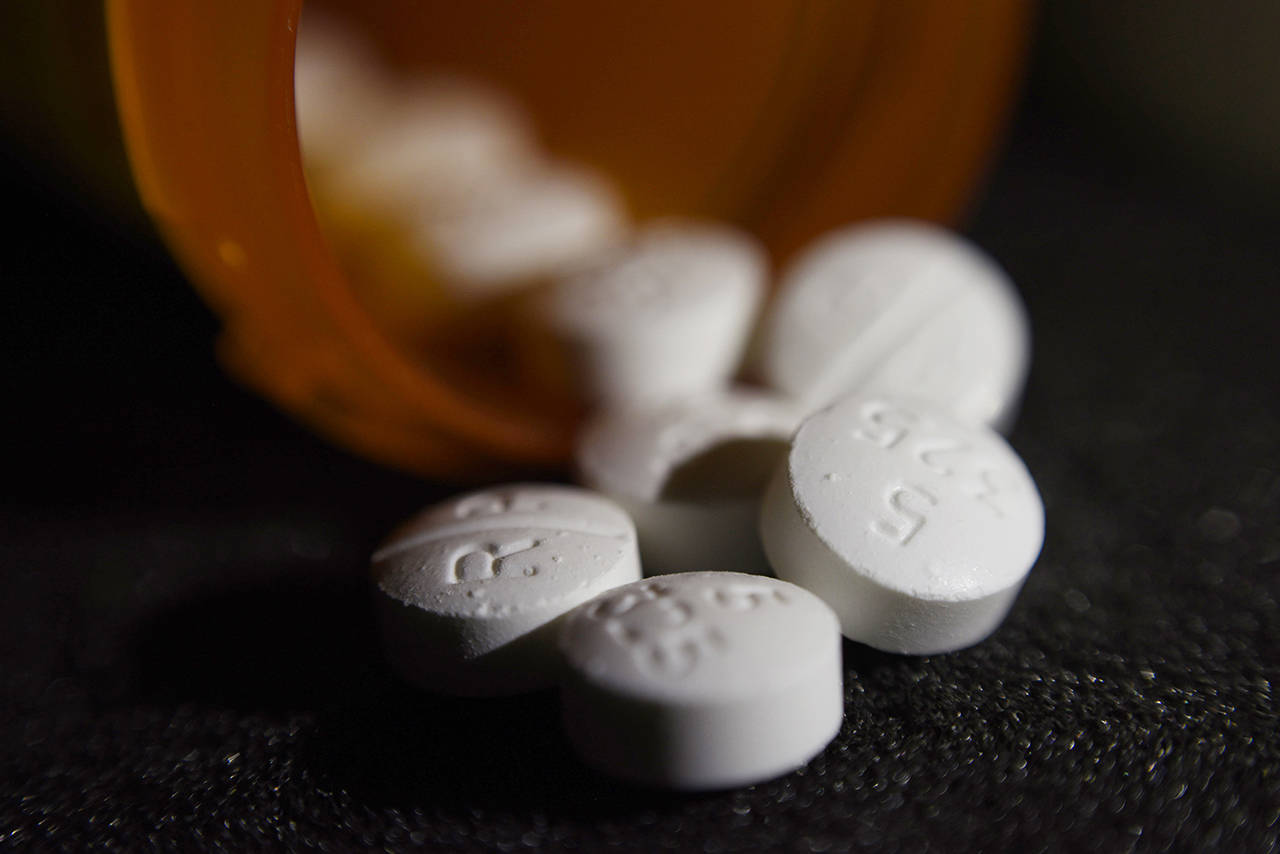By The Herald Editorial Board
Two things are making it likely that a raft of lawsuits against the makers and distributors of prescription opioids will inevitably end in a multi-billion-dollar settlement: One is the mounting list of plaintiffs, joined last week by Snohomish County. The other is the release of details —aggravating in both emotional and legal senses — regarding the actions and apparent motives of the defendants.
Snohomish County is among the latest to join a list of hundreds of state and local governments across the nation — including Washington state, the city of Everett and the Tulalip Tribes — who have filed suit against those making and distributing opioids. The county filed suit Monday in Snohomish County Superior Court against OxyContin maker Purdue Pharma and distributor McKesson Corp., among other defendants, including local doctors, pain clinics and pharmacies.
“We see the suffering caused by opioid addiction in our criminal justice system, our neighborhoods and our schools,” Prosecuting Attorney Adam Cornell said Monday. “By filing this civil lawsuit, we are trying to force these companies to take responsibility for their reckless actions. That is the surest path for protecting our community and others like us.”
Adding to the steady drip of lawsuits have been revelations from court filings that were made public Thursday when Massachusetts Attorney General Maura Healey released an unredacted copy of the suit that Purdue Pharma has sought to block from public view. Among the allegations are that a member of the family that owns Purdue sought to encourage marketing of higher dosages of OxyContin — and thus, greater profits — despite knowing the increased risks for addiction and other side effects, The New York Times reported.
The same document, the Chicago Tribune reported, revealed that at the height of the opioid crisis, Purdue Pharma also discussed purchasing the rights to market the anti-addiction drug suboxone, and the overdose medication naloxone, citing an internal memo that saw “an attractive market” and a “large, unmet meed for vulnerable, underserved and stigmatized patient population suffering from substance abuse, dependence and addiction.”
Purdue has denied the allegations across the board, but Purdue officials pleaded guilty in 2007 to federal criminal charges that it had misrepresented the highly addictive nature of OxyContin. The company and officials paid $634.5 million in fines. In the years since, the Times reported, the opioid crisis continued and the owners of Purdue — the Sackler family — received more than $4 billion in opioid profits.
Most of the lawsuits are now before a federal judge in Cleveland. The judge has advised plaintiffs and defendants to broker a settlement and avoid a long and costly trial.
It’s not too early, then, to discuss what a settlement with Big Opioid should look like and how best to use funds from a payout.
Consider, first, the costs to the nation. Since OxyContin was first sold more than 20 years ago, more than 200,000 people have died from overdoses of prescription opioids. In 2017, 48,000 overdose deaths, including prescription opioids and illicit drugs, such as heroin and fentanyl, were reported. Prescription opioids share responsibility for deaths by illicit drugs because many first acquired their addictions from those legal drugs.
A modest estimate in 2015 of financial costs by Matrix Advisors, a Washington, D.C.-based economic policy consulting firm, put the annual national cost of the opioid epidemic at $55 billion. For Washington state, alone, Matrix put its annual costs at $977 million, the sixth highest in the nation.
Because of the lives lost and destroyed by addiction and the costs incurred by communities in confronting impacts to public heath, public safety, courts and more, a settlement will require that those who profited from the opioid epidemic honestly accept responsibility and agree to concrete changes in how they will do business in the future.
Regarding a just financial settlement, that’s to be determined. But — whatever the figure — how that money is dispersed and used to address the epidemic will demand careful consideration and continuing oversight. That’s on us.
The 1998 settlement with Big Tobacco provides some insight and warning. The settlement was a success in that it penalized tobacco companies $206 billion over a 25-year period and required the companies to end practices that marketed tobacco directly to youths and curtailed other advertising.
But much of that money, divvied up among the states and intended to fund tobacco cessation and prevention programs, was diverted to those states’ general funds or to tax cuts. Washington state — home to one of the state attorneys general who negotiated the settlement, Chris Gregoire — took in $563 million in 2018 as its part of the settlement and its $3.02-a-pack tax on cigarettes. Of that, it budgeted only $1.4 million for youth smoking prevention programs, at a time when e-cigarettes are now rocketing in use by youths across the country.
Whether it comes from a court fine or settlement, the funds resulting from the opioid lawsuits will have to be distributed fairly to those states and communities hardest hit and prioritized toward public health programs for treatment and prevention that will end the epidemic.
Smoking has been on the decline in large part because of the Big Tobacco settlement, but the states and nation missed an opportunity to drive smoking rates even lower and end tobacco’s reign as the leading cause of preventable death in the country.
With the windfall of a Big Opioid settlement, that outcome cannot be repeated.
Talk to us
> Give us your news tips.
> Send us a letter to the editor.
> More Herald contact information.

























